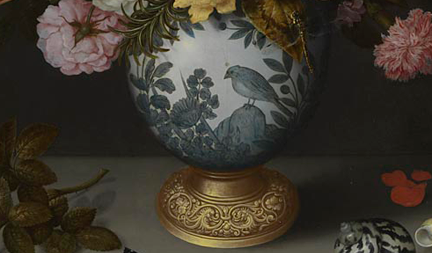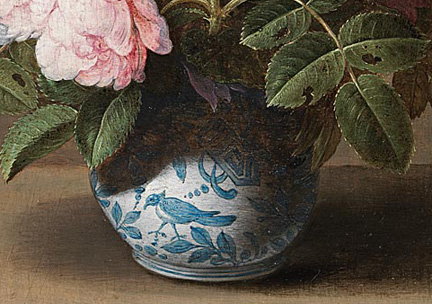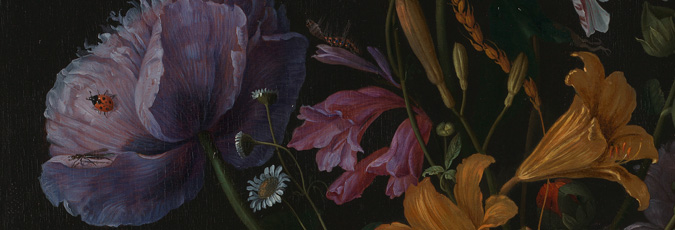Blue and white porcelain
The delicate porcelain vase in Ambrosius Bosschaert’s Still Life of Flowers in a Wan-Li Vase is typical of the luxury wares imported into the Netherlands from Asia by the Dutch East India Company ('Vereenigde Oost-Indische Compagnie', or VOC) during the 17th and 18th centuries. Founded in Amsterdam in 1602, the VOC quickly established a monopoly on Asian trade, setting up major trading posts in present-day India, Indonesia, China, and Japan. Among the costly and exotic goods they brought back for the European market were spices, silk, tea, and porcelain, including blue and white Chinese porcelain known as 'kraak'.

'Kraak' porcelain (the name may derive from the Dutch word for 'caracca', a type of merchant ship) was produced predominantly in the Wanli region of China for export to the West. Its characteristic blue and white decoration included flowers, birds, and other traditional Chinese motifs. By 1620, VOC merchants were importing up to one hundred thousand pieces of Chinese porcelain a year.
As the vase in Bosschaert’s painting shows, pieces were often fitted with gilt mounts to accentuate their luxury and rarity. The inclusion of Chinese porcelain objects in paintings not only signified wealth and refined taste, but was a reminder of the global trade in which the Netherlands was engaged during the 17th and 18th centuries.

Over time, distinctions between Asian and European products began to blur. Examples of European pottery were sent to China to be reproduced for the European market. Conversely, when conflict in China interrupted trade in the late 1640s, manufacturers in Delft began to decorate their own products with blue and white ‘Chinese’ designs.

